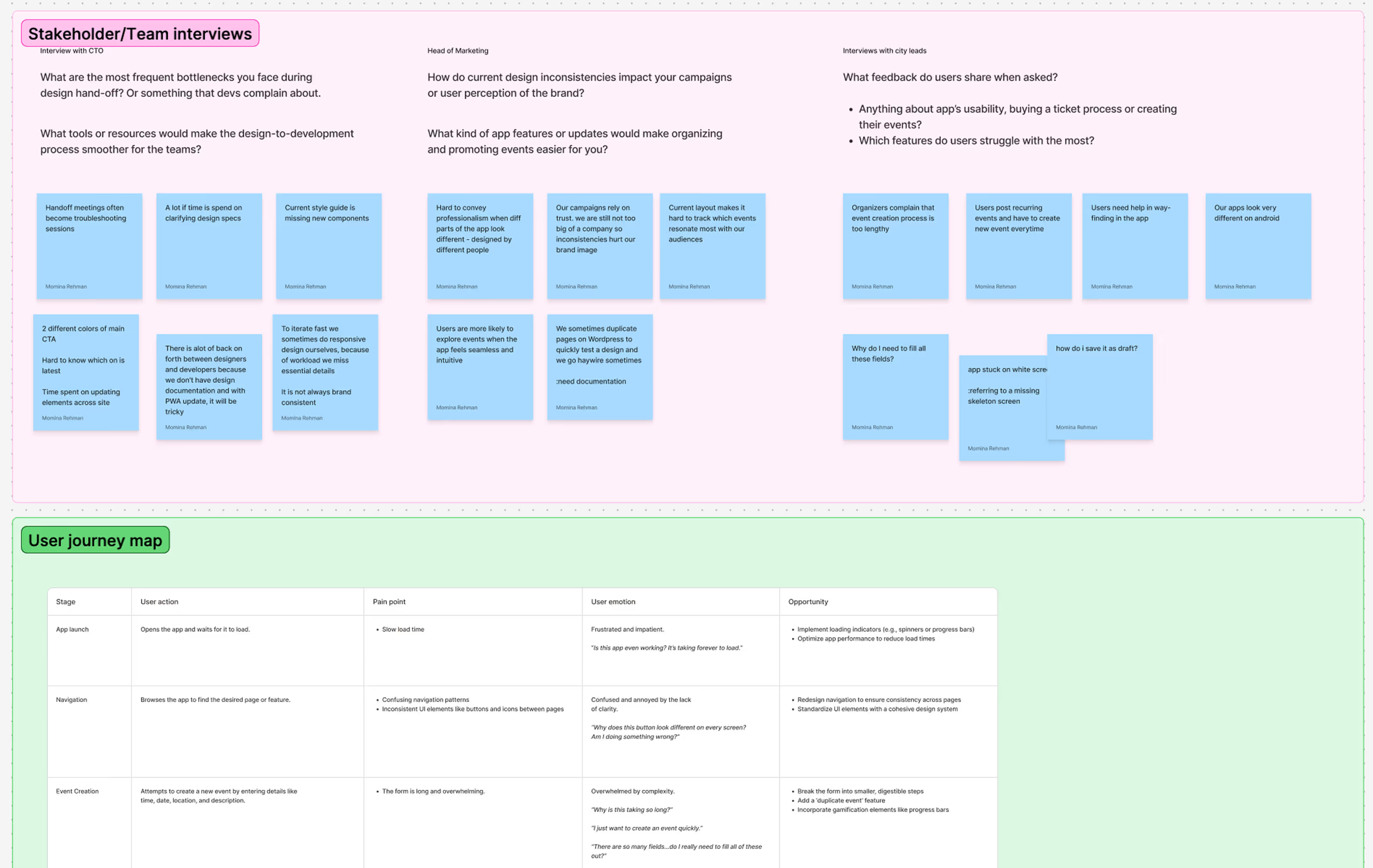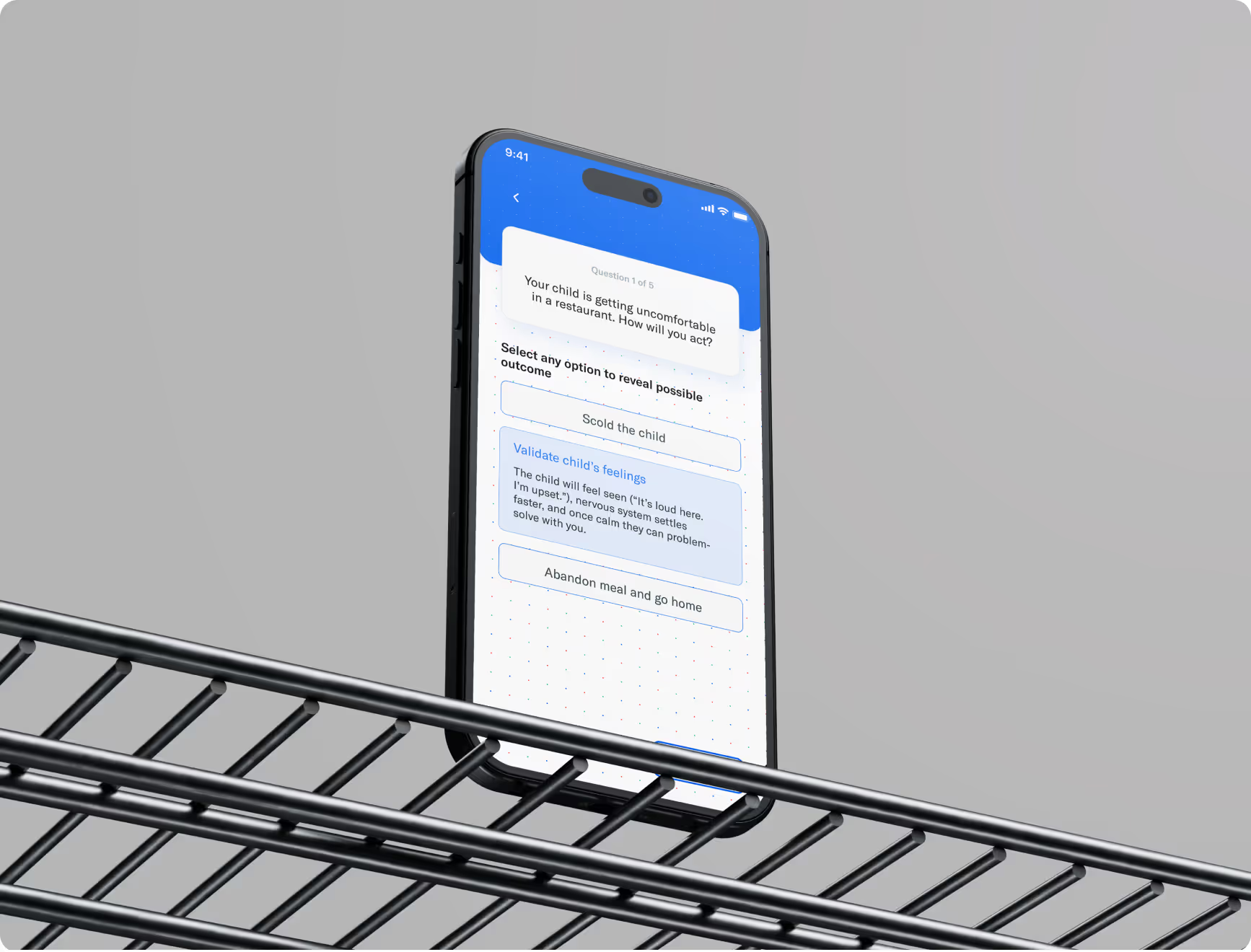

Solving fragmentation with the Unity Design System for UNATION; an event discovery platform
Role: Product Design Lead
Business goals:
- Reduce friction in event creation flow
- Lift cross-platform engagement
- Launch a new revenue surface; ‘Experiences’
- Reduce design/dev rework
Business impact:
2x
Faster event creation & lesser support tickets
+18%
Engagement across web/iOS/Android
110
‘Experiences’ sold in first week of launch
Unity design system adopted by design and engineering, cutting rework, speeding handoff, and quicker QA.
Most creators built events on their phones. The creation screen had become a single, endless form.
New fields kept being bolted on. No progress indicator. Confusing links out to other pages.
People abandoned drafts or opened support tickets. Our local community managers confirmed the pain.
New fields kept being bolted on. No progress indicator. Confusing links out to other pages.
People abandoned drafts or opened support tickets. Our local community managers confirmed the pain.
What I walked into
- Fragmentation everywhere. Multiple designers over time, no shared tokens, inconsistent components across web, iOS, and Android. Disorganized Figma files. Hard to scale, hard to hand off.
- Event creation caused cognitive overload. Long form. Unclear navigation. No accessibility guardrails. Users dropped midway.
- Slow delivery. Higher support/design overhead. Lower trust and engagement.
The bet:
If we unify the system and redesign event creation around progressive disclosure and clear copy, creators will finish faster and number to support tickets will decrease.
My role and how we worked
I led research, IA, UI, prototypes, and dev handoff. Weekly design reviews with PM (and often the CTO). Mid‑sprint check‑ins with engineers to spot blockers early. I also helped write user stories to keep delivery smooth.
Evidence that shaped the plan
With limited budget, I ran a heuristic evaluation and held stakeholder interviews with developers, marketers, and City Leads (community managers). Interviews surfaced the creation flow as the most painful area. We used those insights to drive the roadmap and to define success: faster creation, fewer questions, clearer handoffs.
Research synthesis

Unity Design System - the foundation
What I shipped
- Tokens: brand, text, background, status colors; typography; iconography.
- Components: alerts, buttons, forms, dropdowns, search, grid system; platforms organized by Desktop/iOS/Android.
- Documentation & governance: published on ZeroHeight with guidance and examples; aligned with engineers; updates in Figma reflected in docs.
Why it mattered
Unity reduced inconsistency, sped up handoffs, and gave the team one place to find the current pattern. (The design and dev teams called out the improvement in day‑to‑day feedback.)
Video walkthrough of the Unity design system prototype
Event creation - from endless form to guided steps
Before
A single, very long scroll with many fields and dead‑end links. Hard to know how much was left. No progress. High drop‑off.
Old single page event form

Paper mockups of main screens and ‘create an event’ flow

After
A single, very long scroll with many fields and dead‑end links. Hard to know how much was left. No progress. High drop‑off.
Video walkthrough of the 'create event flow' prototype
What didn’t work first
Our first redesign used collapsible horizontal cards without a progress indicator. Users found it overwhelming, so I pivoted to the stepper model.
PWA and cross-platform consistency
To reach creators on the go and reduce cost, we shipped a PWA and updated iOS/Android apps to the Unity system so the event creation flow feels the same on phone and desktop. This resulted in 18% lift in engagement in the post-launch window.
A new revenue surface: ‘Experiences’
I also designed Experiences: curated, multi‑activity offerings distinct from one‑off events. The first weeks saw 110 sales, validating demand and the system’s flexibility.
Outcomes and measurement
2x
Faster event creation & lesser support tickets
+18%
Engagement across web/iOS/Android
110
‘Experiences’ sold in first week of launch
Unity design system adopted by design and engineering, cutting rework, speeding handoff, and quicker QA.
How I measured
- Post‑release window: ~2–4 weeks, all active users.
- Baseline: the prior 2–4 weeks.
- No major promos or unrelated product changes during this period.
How I work
- Pick the highest‑leverage bottleneck, instrument it, and ship in small slices.
- Design systems before features when inconsistency is the root cause.
- Keep language simple. Make progress visible. Default to accessible patterns.
- Bring engineering in early; write acceptance criteria with PMs; reduce back‑and‑forth.
Testimonial

Lucas Greg Milano
Product Manager
“Momina is a truly spectacular product designer. She has in-depth knowledge and passion for an intuitive user experience and has very advanced UI skills, always keeping up with design trends. She has also been a great team member, with great communication, reliability and consistently evolving her skillset.
Momina's attention detail, user empathy and product instincts helped us develop an entire brand identity and design system for our product. She is an invaluable asset to any product team that values aesthetics and first-class design 🙌.”
Momina's attention detail, user empathy and product instincts helped us develop an entire brand identity and design system for our product. She is an invaluable asset to any product team that values aesthetics and first-class design 🙌.”
Other projects
.avif)
Redesigning SudoStudy; an AI-powered Ed-tech platform, to help students study smarter
I led the full product redesign, from research to UI, focusing on simplifying learning workflows. The result was +66.7% weekly active users, 27% higher session usage per user, and a 31% drop in first-session exits.
Read case study

Building emotional intelligence with Parentify through culturally aware design
Parentify is a mobile app that helps South Asian parents build emotional intelligence and improve communication within families. I led UX strategy, research, and design of scenario-based learning, mood check-ins, and curated emotional resources. Community feedback showed strong emotional resonance, with early testers reporting increased self-reflection and deeper parent-child conversations.
Read case study
